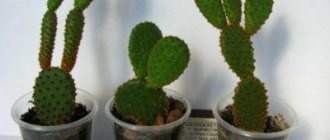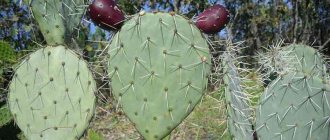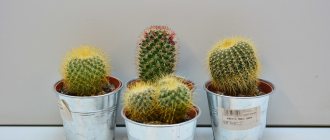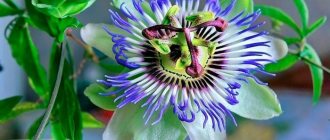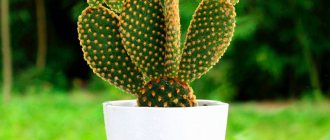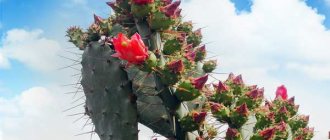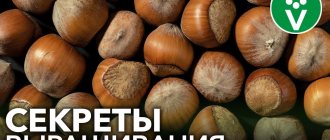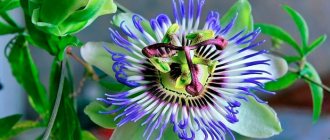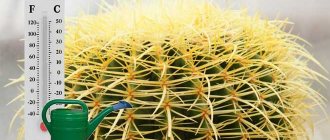The name Opuntia combines a species of plants belonging to the Cactus family. The prickly pear genus is the largest - there are more than 190 species. Many people love cacti for their unusual appearance. These plants sometimes take on very bizarre shapes. And during flowering they present an amazing sight. Large bright buds blooming on thorny shoots amaze with their beauty. Not everyone knows that prickly pear produces edible fruits that are used not only in cooking, but also in medicine and cosmetology.
Where does it grow
Cacti form a family of perennial flowering plants. They were first discovered during expeditions to North and South America, and then brought to Europe. The species of opunts is the most common. In addition to Asian countries, Africa and Australia, Opuntia grows in the Mediterranean. In our country, the plant is found on the shores of the Black Sea, in Crimea. Prickly pear adapts well to different types of climate. It prefers semi-arid habitats. The cactus can grow on dirt, sandy, rocky soils. It only does not tolerate humid tropical climates and severe frosts. It is found on all continents except Antarctica.
From the history
Researcher Bernardino de Sahagún described Opuntia as a kind of tree. In his book General History of the Affairs of New Spain, using information from the Aztecs, he called the Opuntia "Nopalli" and the fruit "Nochtli". The cactus seemed to him like a tree, with leaves, branches and berries covered with thorns. The traveler wrote that both the fruits and leaves of the plant are edible. New branches can form directly from the leaves, and inside all parts of Nopalli there are a large number of strong, hard fibers - “veins”. At the end of the story, it was announced that the plant is widespread in the local environment.
What does it look like
Prickly pear is a tree-like shrub with straight or flat branches creeping along the ground. The branches look like articulated, flattened segments. The height of the stems can reach three meters. The trunk of such plants is the same as that of trees: covered with bark, with a diameter of up to 40 cm. The trunk part is short, mainly prickly pear consists of highly branching fleshy segments - cladodes, which are modified leaves. The segments are elliptical in shape and, as a rule, they are light green in color.
A distinctive feature of prickly pears is the presence of glochidia. These are sharp, hard spines equipped with teeth. They grow on the surface of reduced leaves and around the areoles - the buds of the cactus. Buds form from the buds during the flowering period. All prickly pears have flowers similar in structure and shape - large, with a large number of petals, in bright colors. The color range varies from yellow to red, violet, purple. Plants of the prickly pear species are very diverse. They can be of different shapes, sizes, shades, but they all have a similar structure.
Growing problems
Even such an unpretentious cactus as Opuntia can be ruined by improper maintenance and care conditions; here are the common problems that gardeners face:
- The main stem and branches stretch out, become thinner, and take on an irregular shape - poor lighting. When symptoms appear in winter - increased temperature;
- The surface of the cactus is wrinkled, the stems lose their elasticity, black or yellow spots with rotting flesh may appear at the base - excessive watering, especially affects the autumn-winter period;
- Lack of new branches, stunted growth - old soil, lack of fertilizer, small pot, insufficient watering;
- Halos with dying tissue form on the shoots - mechanical damage, pest damage, exposure to a draft or an open window in winter. In summer, it can occur due to lack of moisture;
- Black or dirty brown spots on stems or leaves - rotting of the cactus due to high humidity, excess watering, can be aggravated at low temperatures. Control method: local removal and disinfection of the cut site with chemicals.
Fruit
After flowering, fruits form in place of the buds located along the upper edge of the segments. Their color depends on the type of cactus. It can be anything: light green, pink, orange, red, purple. Prickly pear fruits are edible. Aborigines have been eating them for a long time. In America, the common name for the fruit is “Indian fig”. Their pulp is juicy, aromatic, and tastes like berries. There is a seed pod in the center of the fruit.
They ripen between September and November. In some plant species, the berries weigh up to 300 g. The yield of prickly pears is high. From 10 sq. m you can collect up to 200 kg of berries. The fruits are collected using long sticks with a rounded knife at the end. The thorns that come across during harvesting are swept away with brushes.
Dudleya edulis
This plant has fleshy grayish-green cylindrical stems that grow in dense clusters. Dudleya is edible only in cooked form.
The plant has a slightly sweet taste that many find refreshing. However, after consuming it, there is a slight chalky aftertaste.
Growing dudleya is quite simple, and it does not require any special care. The plant needs plenty of sunlight and prefers dry, sandy soil. If there is too much moisture, it will lead to rotting of the root system.
Varieties
In our country, cacti of this species are grown in the south in open ground, and in the middle zone - in greenhouses. Popular varieties:
- White-haired
- Berger
- Main
- Lindheimer's prickly pear
- Opuntia subulata
White-haired
This species is common in Mexico. Growing in natural conditions, the shrub can reach five meters in height. The surface of the leaves is strewn with white spines, giving the plant the appearance of hair. During flowering, beautiful yellow calyxes appear. Looks interesting in indoor flowerpots.
Berger
The plant is low, stretches up to one meter in length. This variety attracts the attention of gardeners with its unpretentiousness. Blooms with bright red buds. The leaves are thick, light green in color.
Home (main)
Plants of this species have an interesting surface color. It may be bluish or with a red tint. The flowers are pink, with large petals. Habitat is South America.
Lindheimer's prickly pear
Looks great during the flowering period - large terry buds of a sunny yellow hue bloom in abundance on the crowns of the plant. Can grow up to 3-3.5 meters. Therefore, it is recommended to plant this variety in open ground. The berries are purple in color.
Opuntia subulata
Comes from Peru. A distinctive feature of the species are the spiny shoots protruding from the trunk and branches. The flowers are pink, orange-red. This cactus looks more unusual than other prickly pears. The variety is not tall - it grows a maximum of 1 meter.
Pitaya
This fruit ripens on a night-blooming cactus. The white, edible pulp is encased in a thick strawberry-colored skin and contains black seeds inside.
Some varieties may have bright pink or red flesh. You can eat the fruit raw or make a smoothie from it.
You can grow pitaya in a greenhouse. Despite the fact that the cactus loves warm weather, it feels best at a temperature of 18-25 degrees. If the temperature is above 37 degrees, this can cause damage to the plant.
This plant does well in rich, moderately acidic soil. The plant needs to be watered twice a week throughout the growing season.
Benefits and composition
Prickly pear fruits are very nutritious and healthy. You can eat not only the berries, but also the cladodes of the plant. All parts of the plant contain dietary fiber, water, starch, and glucose. Organic acids are obtained from the pulp: linoleic, stearic, palmitic. Vitamin composition:
- ascorbic acid
- a nicotinic acid
- thiamine
- riboflavin
- pyridoxine
- folic acid
- beta carotene
In addition to these substances, the plant contains calcium, magnesium, iron, and manganese. Calcium is necessary for dental health and skeletal formation. Magnesium plays an important role in the functioning of the cardiovascular system. Iron is an essential component of most body cells. It is part of red blood cells and supplies oxygen to tissues. Manganese affects the functioning of the thyroid gland and maintains blood sugar at the desired level.
Ascorbic acid is involved in the formation of bone tissue, fermentation and metabolism processes. B vitamins are elements necessary for the body to function normally. They participate in intercellular processes and affect hormonal balance. Eating prickly pear fruits and pulp has the following effects on the human body:
- supports immunity, improves hematopoiesis;
- helps cleanse blood vessels of cholesterol deposits and strengthens their walls;
- regulates blood pressure;
- stabilizes the digestive tract, improves smooth muscle motility;
- prevents the occurrence of cancer;
- calms the nervous system, eliminates insomnia and anxiety;
- improves the functioning of brain cells, strengthens memory.
Description
Edible cacti are plants that belong to the cactus family. Fruits can be included in your daily diet. Not everyone knows that the fruits of this plant are edible. For most people, cacti are spiky plants, mostly found near the computer. But there are species of this plant that are not only edible, but also very tasty. Cacti grow in South and North America, in Israel, in Tunisia, where they have long become part of the daily diet.
Application
All parts of this plant are used in different fields. Flowers, cladodes, berries are used in:
- Cosmetology
- Cooking
- Agriculture
- Traditional medicine
Prickly pear flowers produce valuable oil that has anti-aging properties. It is used in the preparation of face and hair masks. It is also added to anti-aging creams. Vitamin E restores cellular structure, increases the turgor of the epidermis, nourishes and moisturizes it. This is an antioxidant that helps prolong skin youth.
Organic acids obtained from cactus pulp are used to make masks and creams for dull skin. Their use helps tighten problem areas of the face and neck and regenerates the cellular structure. Prickly pear fruit extract is added to tanning products and ointments for burns.
Cactus branches and leaves are fed to domestic animals. Thorns are removed by burning the collected parts of the plant. After heat treatment, the pulp becomes softer and more palatable. For feeding, fodder species of prickly pear are used, which are grown specifically for this purpose.
Prickly pear juice is used in folk medicine. Compresses are made from it to heal wounds and accelerate bone healing in case of fractures. These procedures also help with rheumatism and joint pain. Local residents use decoctions of dried fruits to treat vitaminosis and diseases associated with weakened immunity. Berry tincture helps against urinary tract diseases. Drinks from the flowers and roots of the plant improve the functioning of the prostate gland in men and prevent prostatitis.
Not only prickly pear berries are used in cooking, but also the pulp. Young shoots, the size of which is no more than 10 cm, are suitable for consumption. They are cut and eaten fresh or processed. Cladodes can be dried, pickled, stewed, baked. The Indians have long made various drinks using the pulp of cacti.
Prickly pear fruits have a more delicate and pleasant taste. They are eaten raw, and the following dishes are also prepared from them:
- sweet salads;
- jelly, marmalade;
- candies;
- preserves, jams;
- juice, wine, cocktails.
Purslane
With its ability to spread, this low-growing succulent is often considered a weed. However, it is a good source of vitamins and minerals, as well as omega-3s.
Young stems and tender leaves can be eaten raw. Their slightly sour and salty taste adds pleasant notes to the salad. The buds are very tasty and can be added to salads. Purslane seeds are also edible. They can be added to baked goods.
A fantastic garden in Singapore, a bridge in Vietnam and other new wonders of the world
Extraction of white coral: the procedure is very similar to digging up potatoes
By date of birth, you can calculate the optimal interior color for everyone
This plant can be grown from cuttings or seeds. It is undemanding to soil. Seeds need light to germinate, so they do not need to be buried.
If propagated by cuttings, you should simply place them on the soil and water them for several days until rooting.
Recipes
Before starting cooking, the cladodes should be cleared of thorns and rinsed well. The berries must be peeled.
Omelette
This is a traditional Mexican dish. To prepare it you need prickly pear pulp, 2-3 chicken eggs, two tablespoons of flour, grated cheese, and spices. The prickly pear leaf must be cut so that it remains whole at the base, and the rest is strips 1 cm thick. The leaves are boiled for 20-25 minutes until soft. The eggs are broken into a cup, mixed with flour, and salted. The cactus pulp is dipped in batter and placed in a frying pan with heated olive oil. Fry on both sides, add spices. Before serving, sprinkle with grated cheese. You can eat the omelette with tomato or cream sauce.
Prickly pear salad
To prepare you will need: 2-3 prickly pear leaves, cucumber, celery stalk, canned peas. The cactus pulp is soaked in cold water for 15 minutes. Then the top layer of the peel is cut off. The leaves are cut into cubes with a side of 1 cm, brewed with boiling water for 10-15 minutes. This is necessary so that they soften and acquire a pleasant taste. Chop the cucumber and celery and place in a salad bowl. Pieces of prickly pear and peas are also added there. The salad is dressed with balsamic sauce. You can add a pinch of ground chili pepper.
Jelly
To make a beautiful jelly, you need to take prickly pear berries that are red, yellow or cherry in color. For half a kilogram of fruit, take 500 ml of water, two tablespoons of sugar, and a bag of gelatin. The berries are peeled and cut into slices. Place in a blender and blend until pureed. Gelatin is diluted with a small amount of warm water. Berry puree is poured into a pan of water and brought to a boil. Then cook over low heat for 10-15 minutes. The swollen gelatin is poured into the mixture and stirred. The mass is cooled, poured into molds, and set to freeze.
Opuntia Reproduction
Possibly in two ways: cuttings and seeds. Cuttings are used more often than propagation by seeds. In the same way, the cactus develops new territories in the wild. But let's look at both methods:
When propagated by seeds
This results in a much larger number of young plants of approximately the same age. The second advantage of this method is the good health of the young animals. Opuntia seeds can be planted within two years from the date of collection. As was said, cactus seeds are covered with a hard shell, and in order for the sprout to break through it, you need to perform scarification:
Scarification is stimulating plant growth by breaking the integrity of the hard shell of seeds mechanically or by exposure to a certain temperature.
- A small part of the crust is removed from any edge of the seed by grinding it off with a file or sandpaper. After removing part of the cork layer, you will see a black “dot” - a grain in the center, it is important not to damage it;
- Soak the seeds in a weak solution of potassium permanganate for 1-2 hours;
- Place the planting material in distilled water for a day;
- Place in a porous, damp material such as padding polyester or foam rubber, and then in a plastic bag and leave at a temperature of 20-25 degrees for germination;
- The seeds will germinate within 10-20 days, this happens unevenly, check them periodically.
Seeds with sprouts are planted immediately in separate containers to a depth of 1-1.5 cm. The soil is prepared from charcoal, rotted leaf soil, crushed expanded clay, and coarse sand in equal parts. The composition should be light and breathable. Do not forget to lay out a drainage layer at the bottom. Greenhouse conditions are created until the first two leaves and a small “cactus” appear between them. This is followed by diving (deepening) to the growth point of the first two leaves and abandoning greenhouse conditions. Subsequent care does not differ from the conditions for an adult plant.
Before diving, the lighting is kept plentiful, but without direct sunlight, so as not to damage the first two leaves of the plant.
It is possible to germinate Opuntia seeds directly in the substrate. This method differs from the previous one in that after mechanical “opening” and disinfection with potassium permanganate, the seeds are placed in wet river sand (which is calcined before this). For germination, greenhouse conditions are created with a temperature of 20-25 degrees Celsius, and when shoots appear, the sprouts are transplanted into individual containers. The disadvantage of this method will be poor visualization of the appearance of sprouts at the initial stage of Opuntia growth.
When grown by seeds, the central stem first grows cylindrical in shape, and only then, increasing in diameter, becomes flat.
For propagation by cuttings
Select small healthy branches (babies) of the prickly pear and cut them with a sharp knife. Dry for 3-4 days. After the cut has healed and the shoot has become a little soft (dried), you can begin planting.
For this method of reproduction, the end of spring - the beginning of summer is suitable, at this time the temperature is favorable 20-25 degrees, and sap flow is at a high level.
The pot is chosen to be small in size, with a drainage layer 1-2 cm thick at the bottom. The soil is suitable in the same way as when planting sprouted seeds (found in the previous subsection). It is not necessary to deepen the sprout much, this is only necessary so that it stands more or less vertically. The soil is slightly moistened and the seedling is left in a dark place for rooting. Watering the cuttings should be done a little more often than an adult plant, by 25 percent, but also after the top layer has dried to a depth of 2-3 cm. For more reliable root formation, you can make a mini greenhouse, covering it with a plastic bag or glass jar.
Interesting Facts
The Mexican Indians have a legend that the ancient Aztec state of Tenochtitlan was founded on the site where a large prickly pear shrub grew. At that time, the Aztecs did not have their own settlement and wandered through the mountains. One day they saw a cactus on which an eagle was sitting, having dealt with a large snake. This was interpreted by the leader as a good sign, and the Indians decided to found a city on this place. Now there is modern Mexico City (the capital of Mexico).
The Sicilian province annually hosts a festival dedicated to prickly pear. It is celebrated in October, when the harvest has already been harvested. The village is decorated with garlands and food tents are set up. The main treat is the berries of the plant, but there are many other goodies as well. You can taste a delicious liqueur made from prickly pear fruits, try different dishes from the queen of the holiday. At the end there is a fireworks display.
Popular signs say that prickly pear in the house protects against the evil eye and attacks from ill-wishers. If the plant is placed on a windowsill or table, then sorcerers will not be able to damage the owner. And according to modern concepts, cacti neutralize electromagnetic radiation emanating from a computer, TV, etc.
There is also a sign that prickly pear in the house is a sign of divorce. The plant with its energy attracts lovers and brings relationships to disintegration. In the Middle Ages, ladies used this ability to eliminate an annoying spouse. There is also an opinion that the cactus lives well in families where scandals and quarrels are frequent.
However, you should not blindly believe in prejudices. A passion for cacti indicates an unusual nature, a love for everything extraordinary. Blooming prickly pears are a wonderful interior decoration that creates a positive mood for all household members.
Banana Yucca
This plant gets its name from its long, edible fruits. The fruits grow from bluish-green leaves. The ripe pulp is fleshy and sweet, so it can be eaten raw, fried or dried.
The white flowers are also edible, but have a soapy flavor that becomes less pronounced as they ripen. The thick stem of the plant can be cooked and eaten.
Yucca is a drought-tolerant plant, but can grow in moist soil as long as it is well-drained.
Found a violation? Report content

